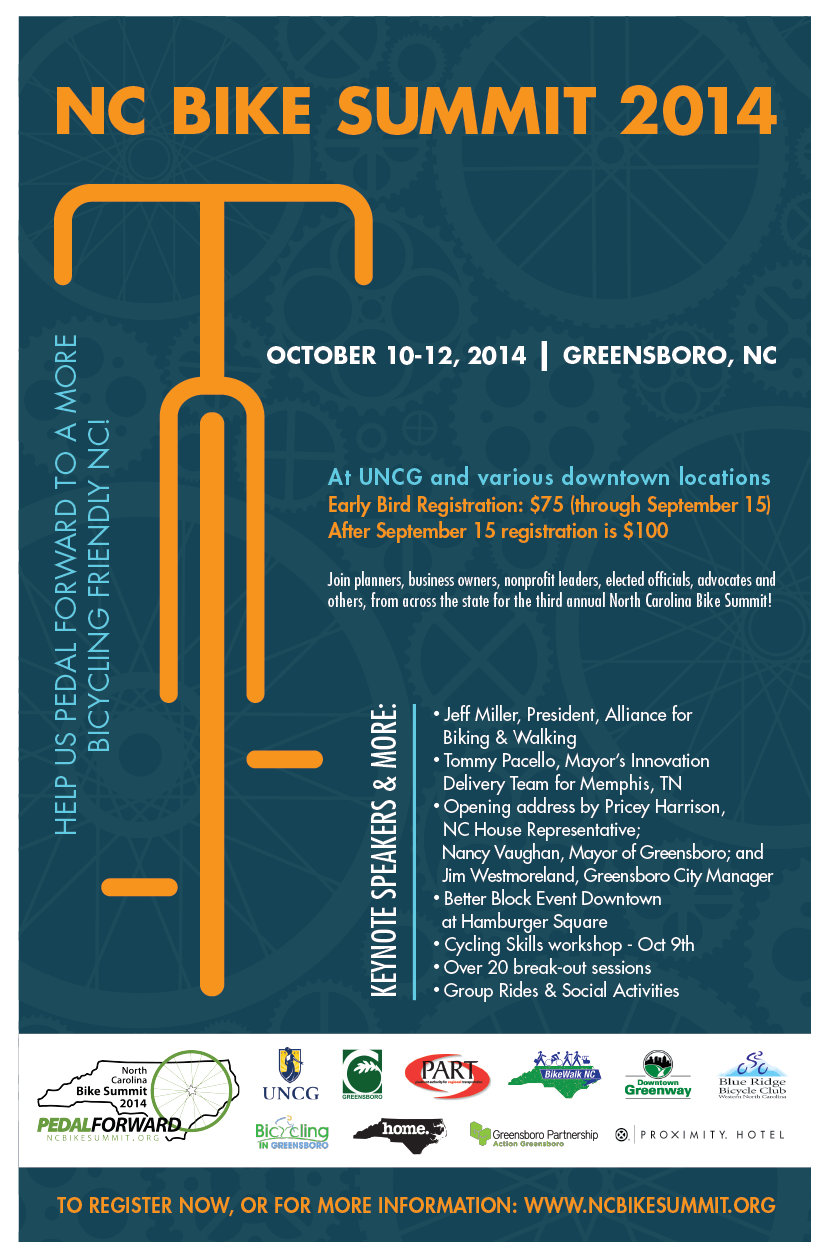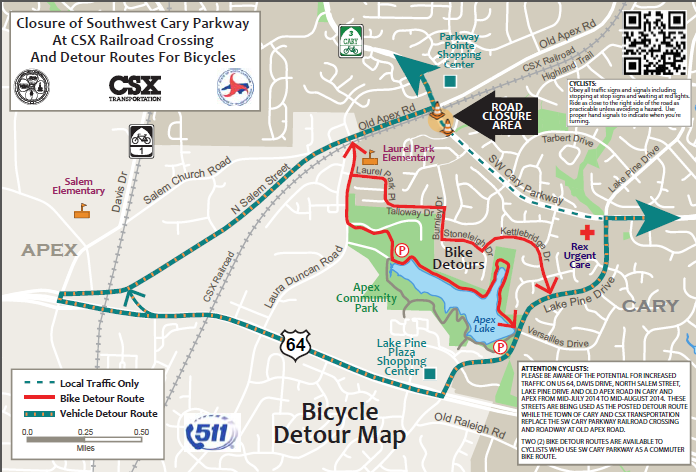The third annual North Carolina Bike Summit was held October 9 – 12 in Greensboro. BikeWalk NC partnered with many groups in Greensboro to put on the summit. Laura Peoples, with Bicycling in Greensboro and Suzanne Williams, with the University of North Carolina at Greensboro headed the planning committee. They did a wonderful job pulling everyone together and deserve much credit. BikeWalk NC thanks them and everyone else in the planning and execution of the conference.
The conference began on Thursday with a Traffic Skills 101 class developed and taught by Steven Goodridge of BikeWalk NC. Several other League Certified Instructors from Bicycling in Greensboro helped with the class. An informal gathering at Revolution Cycles on Thursday evening provided an opportunity for networking among participants.
Friday through Sunday were packed with informative sessions which offered something for everyone. There were breakout sessions, panel presentations, mobile workshops, and lots of fun activities. The keynote speaker for Friday was Jeff Miller from the Alliance for Biking and Walking. He spoke to us about the benchmarking progress of bicycling and walking in North Carolina and across the US.
Friday evening we met at Hamburger Square in downtown Greensboro to experience the Greensboro Better Block demonstration project. Participants were able to experience and comment on the streetscaping project which explored ways to make the area more walkable, bikeable, and inviting to the public. A beer garden set up at Natty Greene’s featured a beer brewed specifically for the Summit: Ride Wit It. Rain only slightly dampened the enthusiasm at the event.
Saturday’s keynote was Tommy Pacello, who works with the city of Memphis in generating economic vitality in core city neighborhoods. He described how the emergence of small, low-risk and often resident lead projects can help change a neighborhood. Following Saturday’s presentations BIG’s Jeff Sovich lead participants on a bicycle pub roll with a group dinner at the first stop.
Sunday’s sessions ended at noon. Due to the weather the afternoon bicycle ride was cancelled and everyone headed home.
The seed money for all of the Bike Summits have been provided from proceeds of New Belgium’s Tour de Fat. Due to excellent planning and the generosity of partners in Greensboro, the summit was profitable. BikeWalk NC gave $2000 to the city of Greensboro to use to further biking in the city. There are plans to purchase a bike fix it station for the city. BikeWalk will use profits to help with the search for and funding of their first Executive Director.
Thanks go to everyone who helped, supported, and participated in this year’s bike summit. Next year the event will be held in Charlotte. The dates will be announced soon. Stay tuned.


